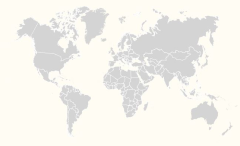Eileen Napaltjarri is a Pintupi-speaking indigenous artist from Australia"s Western Desert region.
Background
Born at Haasts Bluff, Northern Territory in 1956, daughter of Charlie Tarawa Tjungurrayi (aka Charlie Tararu Tjungurayi), one of the founding members of Papunya Tula ists, and Tatali Nangala, Eileen was the only one of seven siblings to follow her parents" advice and take up painting.
Career
Eileen Napaltjarri, also known as Anyima Napaltjarri or Nanyuma Napaltjarri, began painting for Papunya Tula artists" cooperative in 1996. She was reportedly the only one still alive by 2008. However, journalist Nicolas Rothwell in 2006 stated that Napaltjarri"s husband was named Kenny Williams Tjampitjinpa.
Background Their work, which used acrylic paints to create designs representing body painting and ground sculptures, rapidly spread across indigenous communities of central Australia, particularly following the commencement of a government-sanctioned art program in central Australia in 1983.
By the 1980s and 1990s, such work was being exhibited internationally. The first artists, including all of the founders of the Papunya Tula artists" company, had been men, and there was resistance amongst the Pintupi men of central Australia to women painting.
However, there was also a desire amongst many of the women to participate, and in the 1990s large numbers of them began to create paintings. In the western desert communities such as Kintore, Yuendumu, Balgo, and on the outstations, people were beginning to create art works expressly for exhibition and sale.
She first began painting in 1996, aged 40, for Papunya Tula, of which her father had been one of the founders in the early 1970s.
Sources differ on when her work for Papunya Tula became regular, with Gallery Gabrielle Pizzi placing this at 1999, while Vivien Johnson, in her survey Lives of the Papunya Tula ists, suggests 2002. As of 2010, Napaltjarri had held two solo exhibitions, the second at Utopia Sydney. In 2006, journalist and writer Nicolas Rothwell named her as the successor to Papunya Tula"s most significant founding women: Makinti Napanangka, Wintjiya Napaltjarri and Tjunkiya Napaltjarri.
Australian Collector magazine, in its annual survey of Australian art, included Napaltjarri in its 50 Most Collectable ists for 2008.
Works by Napaltjarri are held by the Gallery of New Wales, and the. Napaltjarri paints sites associated with both her mother"s country around Kintore, Northern Territory, and her father"s country, Tjitururrnga (or Tjiturrulpa), to the west of Kintore.




